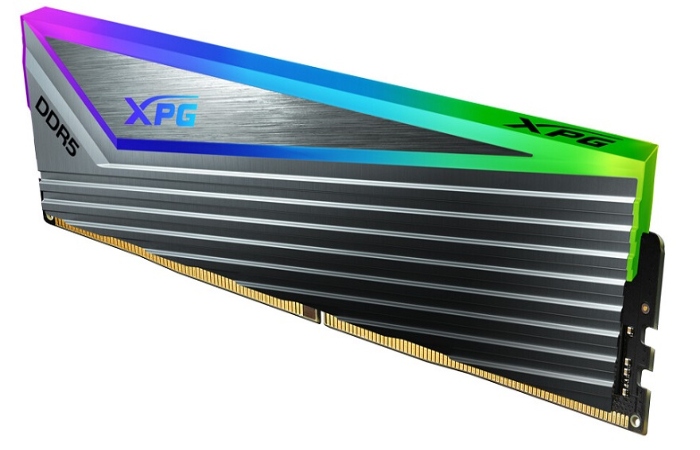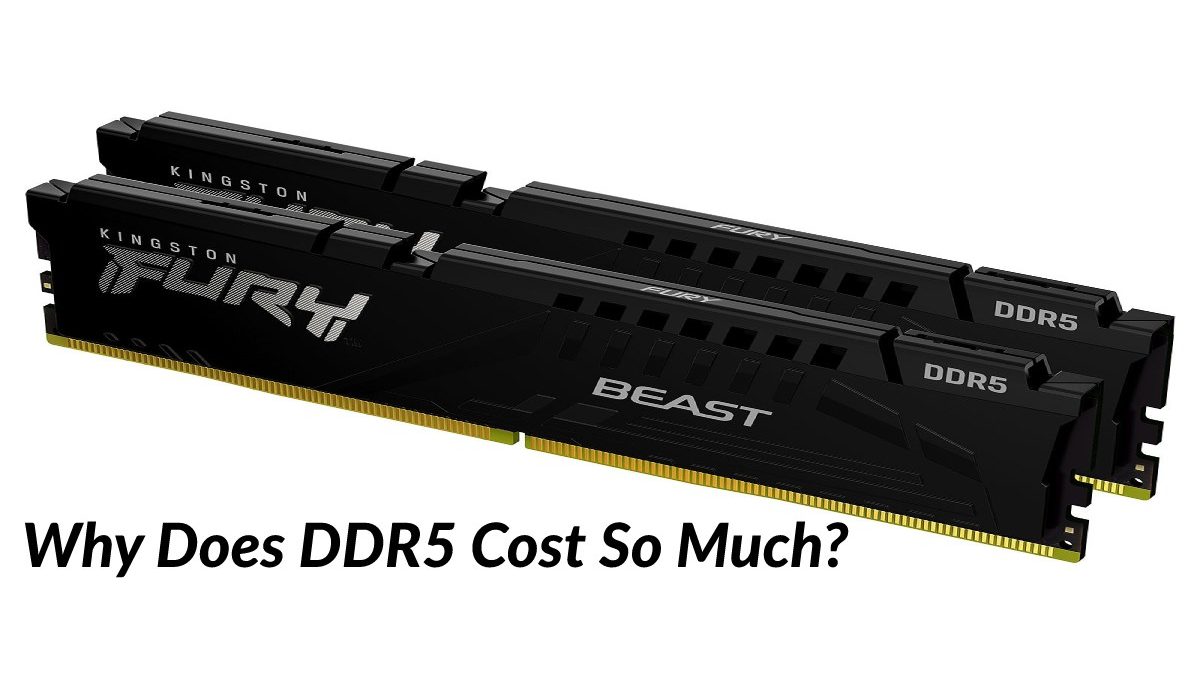DDR5 is finally in the wild, but persons trying to get on the DDR5 train early have faced high prices and low deliveries. TransForce has released its analysis of the current RAM market as a beacon of hope for the status of DDR5.
TransForce states that PC OEMs are trying to manage their inventory to maintain a balance between laptop and desktop sales. Although demand for laptops remains high, TransForce predicts an overall cyclical decline in DRAM prices. A drop of around 5% to 10% is expected for DDR4, while DDR5 is only about 3% to 8%. It is conceivable that this would result in lower prices for consumers, but it is not.
PC manufacturers are still paying a higher Average Selling Price (ASP) is the current “low penetration rate” of DDR5. Intel’s Alder Lake processors are still relatively new, so there aren’t many DDR5-capable motherboards yet. Additionally, many PC manufacturers will continue to favour DDR4, especially considering it still offers a viable value proposition.
Everything indicates that DDR5 RAM will be the most used in the coming years. Let’s see how it differs from the current DDR4 and how you can install it on your PC. While DDR5 prices may decrease overall, the average retail price is unlikely to drop.
Table of Contents
What’s New in DDR5?

DDR5 is the most significant jump in PC RAM since the first DDR release in the early 2000s. It will start at DDR5-4800, which means the memory controller performs 4.8 billion transfers per second. Nor for having lowered its voltage to 1.1 volts, which allows it to consume 30% less energy than standard DDR4 RAM per transmitted bit.
However, the big difference is supporting twice as many memory channels, thus, but without increasing the total bandwidth. Therefore, each DDR5 DIMM can perform two simultaneous transfers of 32 bits of bandwidth per clock cycle. It is a significant change, as DDR4 can transfer 64 bits per cycle.
Are there Benefits to DDR5 for Gamers?
DDR5 makes a lot of performance and data integrity improvements over DDR4. Increasing memory speed (bandwidth) can help improve the user experience by increasing the amount of FPS while playing certain games. The performance improvement will, of course, vary depending on the game played. Some games are more dependent on CPU performance than GPU, and in that case, faster memory can be beneficial for a better user experience.
Are the Latencies Set to Improve?
DDR5 release with JEDEC standard speed, timings, and voltage of 4800MT/s CL40 (CAS latency) 1.1v. Population rules for some systems may force memory to clock down if multiple DIMMs install per channel. Check with your motherboard or system manufacturer to confirm supported memory speeds. The following standard speed class of DDR5 will be released sometime in late 2022 at 5200MT/s CL42. Kingston’s FURY line of memory overclocking products launched with two-speed types at lower latencies to further improve performance. Different speeds and lower latencies will announce in the coming months.
KF548C38BB-16 – DDR5-4800 – CL 38-38-38 @ 1.1V
KF552C40BB-16 – DDR5-5200 – CL 40-40-40 @ 1.25V
DDR5 Supposedly has Less Power out of the Box
While DDR5 memory uses less power than DDR4 (1.1V vs 1.2V) at JEDEC standard speed, XMP profiles (overclocking) will still require additional ability to operate the memory module at higher rates. The power savings of DDR5 in laptops and data centers are best.
Will we see Greater Capacities?
PC DIMM Capacity Update
• 8GB, 16GB, 32GB DIMMs with 16Gbit density DRAM.
• SODIMM platforms to launch in 2022 with same capacities.
Single or Double-Sided, is there a Benefit?
Dual-rank (2R) memory modules have traditionally outperformed single-rank (1R) modules due to their ability to interleave the ranks. Motherboards can have performance limitations that alternate memory performance for 2R modules and modules connected in two DIMMs per channel.
When do you expect DDR5 to be the Most Prominent Memory Technology in Gaming PCs?
Memory technology transitions are affected by a list of factors. First is the chipset architects’ commitment to adopting new memory technology, which requires its use when paired with their processors.
The second is supply and demand, or how quickly DRAM and related DDR5 semiconductor vendors can support market demand reasonably. Historically, transitions occur 2-3 years after introducing new memory technology or when 30% of the market has adopted the latest technology.
Price parity and legacy memory availability will also be essential factors. With fewer DRAM vendors on the market nowadays, the skill to maintain legacy memory technology is diminished compared to ten years ago. Consumers may switch to a new memory technology when legacy memory becomes unavailable, regardless of its higher price.
We already see kits rated at 6,400 MT/s. Is overclocking the big sell for DDR5?
Performance improvement is often why PC users and enthusiastic gamers are willing to adopt the latest technology available. The introduction of DDR5 with a desktop motherboard and processor family is a statement from Intel that they target the enthusiast/gamer, where overclocking is a natural assumption. Kingston’s focus for our DDR5 launch is with our FURY Beast line of memory products. Since the DDR5 components are new, the silicon will take a while to mature and see how far it takes.
What Advantages Will DDR5 Memory have?
It memory will carry us larger modules, starting at 16 GB. It means that PCs are working to have more RAM. In 1 or 2 years, the most negligible value will be 32 GB, and it will rapidly go up to 64, 128, and even 512 GB of RAM. The higher speed of DDR5 will make games and applications run faster, especially computers with a processor with many cores. Lastly, it will heat up less and consume less than DDR4, a benefit in the design of future PCs.
Conclusion
Everything indicates that DDR5 RAM will be the most used in the coming years. Let’s see how it differs from the current DDR4 and how you can install it on your PC. Alder Lake supports DDR5 and DDR4, serving up a bit of a patch for those consumers who can’t afford the latest-gen RAM. Of course, with the arrival of the 13th generation of Intel and the new Ryzen next year, it is expected that the demand will grow in 2022. Could the supply have stabilized by then?



